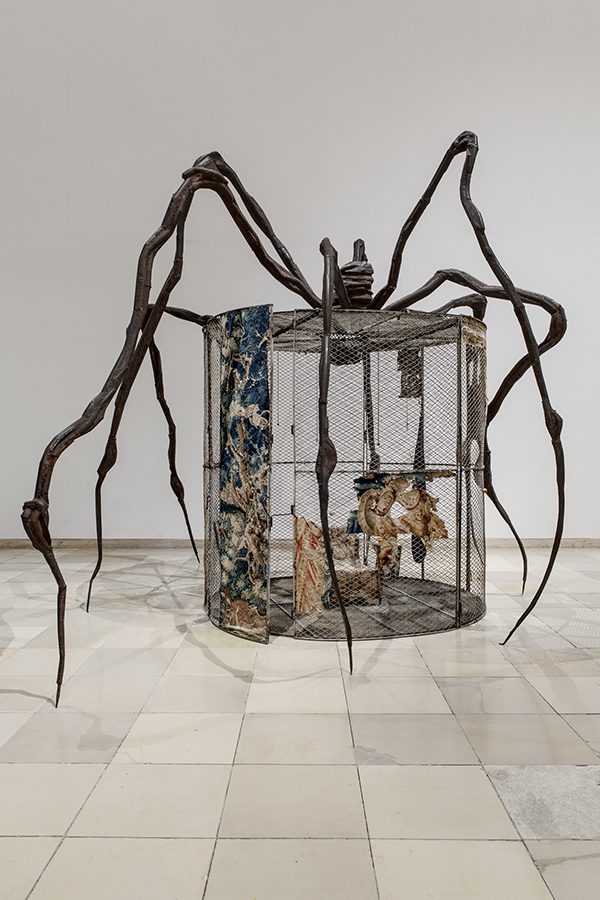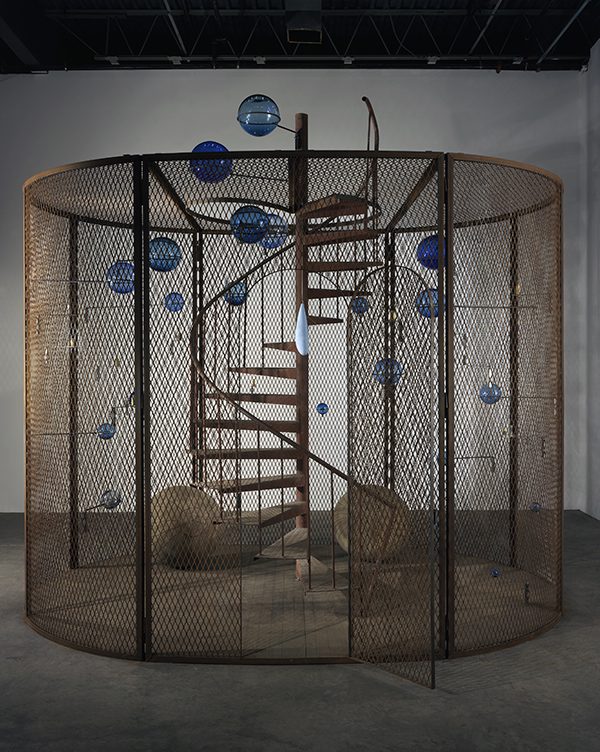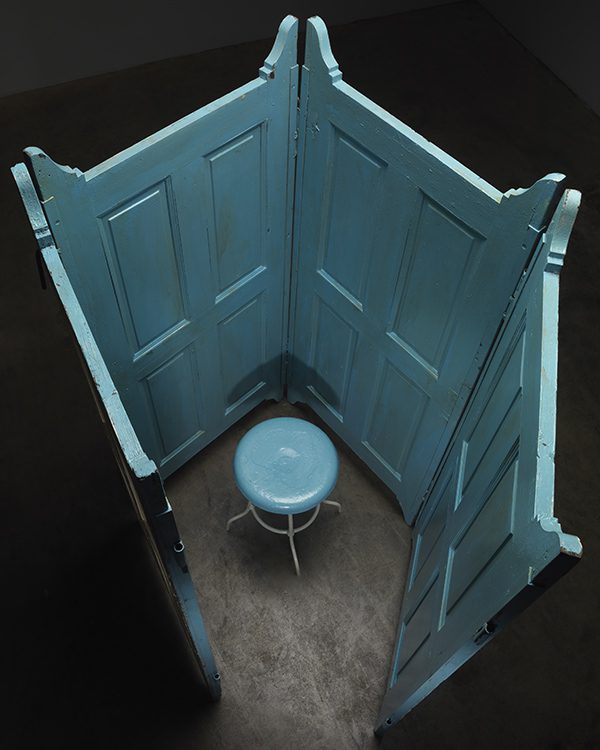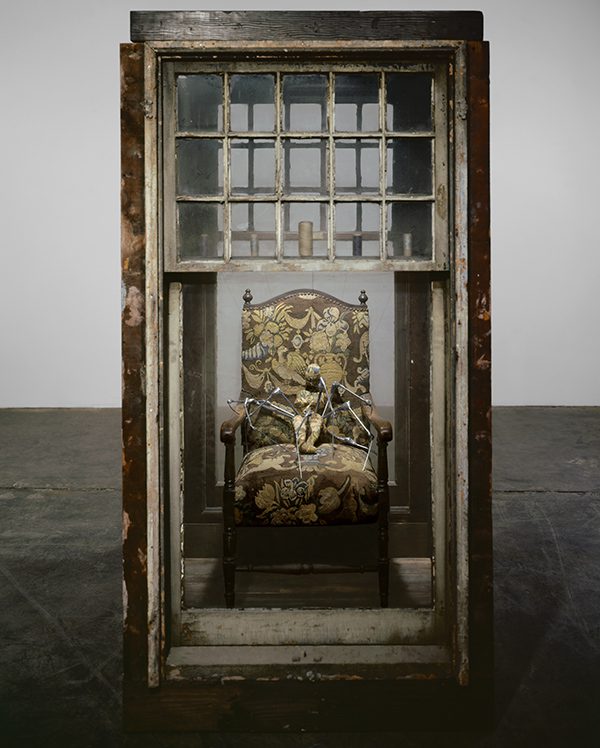ART-TRIBUTE:Louise Bourgeois-Structures of Existence The Cells
 Louise Bourgeois stated that her art is existentialist, allowing her to make sense of everything. Like an exercise in psychoanalysis, it enabled her to plumb the depths of her unconscious and sublimate certain aspects of the past, especially those related to her childhood and family relationships. The “Cells” have a dual symbolism and can be interpreted as lairs or as spaces of protection or reclusion. Several characteristic the objectual, the formal, the spatial, the psychological, experience, and subjectivity converge in these works.
Louise Bourgeois stated that her art is existentialist, allowing her to make sense of everything. Like an exercise in psychoanalysis, it enabled her to plumb the depths of her unconscious and sublimate certain aspects of the past, especially those related to her childhood and family relationships. The “Cells” have a dual symbolism and can be interpreted as lairs or as spaces of protection or reclusion. Several characteristic the objectual, the formal, the spatial, the psychological, experience, and subjectivity converge in these works.
By Dimitris Lempesis
Photo: Guggenheim Bilbao Archive
Louise Bourgeois created approximately 60 Cells over the course of her career. The exhibition “Louise Bourgeois: Structures of Existence: The Cells” presents 28 emotionally charged architectural spaces, each an individual microcosm separating the internal from the external world, the exhibition also reunites Cells I to VI for the first time since 1991, when they were first shown at the Carnegie International in Pittsburgh. The term “Cell” originated during the preparations for the Carnegie show. For Bourgeois, this word had many connotations, as it refers to the biological cell of a living organism as well as the isolation of a prison or monastic cell. The “Cell” series revolves around the desire to simultaneously remember and forget. “You have to tell your story and you have to forget your story. You forget and forgive. It liberates you”, Louise Bourgeois once claimed. In this respect, the Cells contain references to individuals and experiences from the past. The needles, thread, and spindles incorporated in these works allude to the artist’s childhood and her parents’ work. The works also speak of abandonment, betrayal, and loss, rooted partly in the strain under which the Bourgeois family lived for years. “Cells I-VI” address the themes of secrecy, voyeurism, and physical and psychological pain. Louise Bourgeois was concerned with how the human body physically expresses anxiety and fear. As hysteria was often characterized as a female condition, Bourgeois decided to show a man in that arched-back position, wondering whether the figure was in a state of pain or pleasure. In “Cell (Choisy)”, Bourgeois rendered a replica of her childhood home in pink marble, a material reminiscent of human flesh. The guillotine blade hovering above it symbolizes the past, cut off by the present. “Passage Dangereux” and “Precious Liquids” are narratives about a young girl going through the rites of passage. “Red Room (Child)”, houses elements associated with Bourgeois’s childhood: the red and blue spindles and needles recall the tapestry workshop run by her family, the child’s hands resting in those of an adult suggesting a longing for security and a pair of mittens embroidered with the words moi and toi reinforce that desire.. “Red Room (Parents)”, is more orderly. The bed, a place of closeness and sexuality, is flanked by two marble sculptures of naked torsos partially covered in cloth. A xylophone case and a toy train on the bed recall the presence of a child. In children’s eyes, sexuality is a mystery that is usually concealed. In “Cell XXVI”, the hanging fabric figure is a variation on an earlier sculpture, “Spiral Woman”. For Bourgeois, the “Spiral Woman” was a self-portrait and signified a confrontation with the self that we all experience. “Cell (The Last Climb)” is one of the last works in the series. In the exhibition it is surrounded by six panels of the work on paper entitled “I Give Everything Away”, which Bourgeois made shortly before her death.
Info: Curators: Julienne Lorz and Petra Joos, Guggenheim Museum Bilbao, Avenida Abandoibarra 2, Bilbao, 18/3-4/9/16, Days & Hours: Tue-Sun 10:00-20:00, www.guggenheim-bilbao.es






